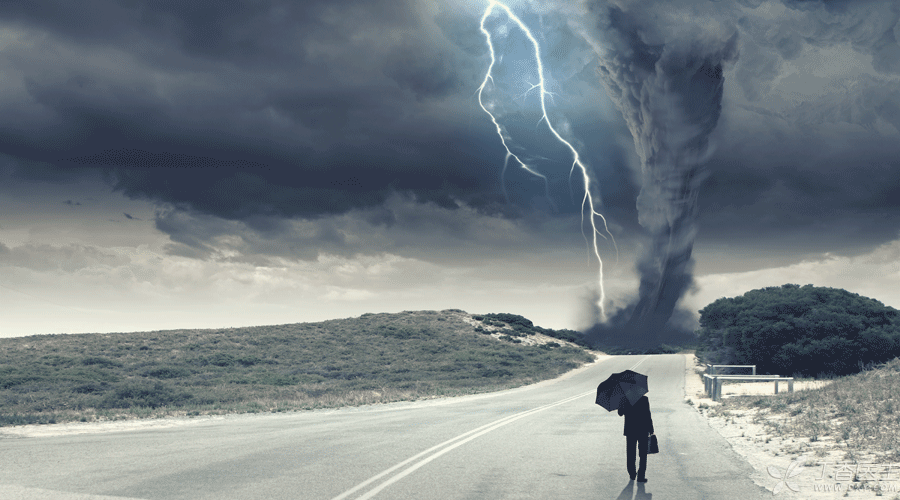
All thunderstorms are very dangerous. When thunder rings, will lightning be far away?
Today, Dr. Clove will come to talk to you about all-round strategies to ensure the safety of himself and others in the face of thunder.
Outdoor Safety Guide
In fact, the best protection strategy is to stay at home honestly during thunderstorms. If you happen to encounter lightning and thunder outdoors, don’t panic. Here are some life experiences of protecting yourself from lightning strikes outdoors.
Step 1 Be vigilant
Before preparing for outdoor activities, it is best to check the local weather forecast. If there is thunderstorm, it is best to postpone the trip. If you have to go out, be sure to check the route in advance and make sure there is enough safe shelter during the trip.
Step 2 Hide indoors
As the saying goes: [Thunder before rain, The ship went back.] So, Hearing the thunder, Take the time to find a safe and closed building to hide. Going home, going to the office and going to the shopping center are all good choices. If conditions do not permit, Hiding in the car is also a topic. Although hiding in the car cannot guarantee protection from injury, it is better than staying outdoors, and as long as we don’t touch the metal objects in the car, the car can still protect us temporarily.
Step 3 Get down
If you happen to be outdoors when a thunderstorm comes and you can’t find a building to hide immediately, then squat down quickly and curl up into a ball (legs together, head down, hands behind your ears). Never lie on the ground! The current generated by lightning strikes can travel 30 meters on the ground! Therefore, squatting is the best protective posture to reduce the body height and the contact area with the ground.
Step 4 Avoid crowds
If you are with many people when thunderstorms come, you’d better keep a certain distance from each other. This can reduce the possibility of injuries to each other caused by ground conduction current during thunderstorms.
5. Special circumstances with nowhere to hide
If you are in the forest, try to hide under some low-lying small trees. If you are in the open suburbs, hide in low-lying ravines or valleys, and stay away from those [natural lightning rods], such as a lonely big tree in the suburbs; If you are in the water, go ashore to find a place to shelter from the rain.
In short, we should hide in the sealed room and the lower part in the first place.
Indoor Safety Guide
It is much safer to stay indoors in thunderstorm weather, but this does not mean that you have no worries. Statistics show that about 1/3 of lightning strikes occur indoors. Here are some safety strategies for how to avoid lightning strikes indoors.
Step 1 Stay away from water
Don’t take a bath, shower or wash dishes, and avoid any possibility of contact with domestic water, because the water pipes in the kitchen or bathroom can also conduct electricity.
Step 2 Avoid using electrical appliances
Try to use less computers, video games, washing machines, dryers, ovens and any other household appliances that need to be plugged into power outlets.
It is best to install lightning rods to protect household appliances from damage.
Step 3 Avoid wired telephones
It is not safe to use a wired phone when it thunders, so you don’t need it if you can. However, wireless phones or mobile phones can still be used, which is safer.
Step 4 Stay away from windows, doors and walls
Don’t lie on the floor or lean against the wall.
5. Avoid contact with any metal-related objects

What can’t be done when there is lightning and thunder?
1. Don’t stay in open vehicles, buildings or public areas.
Do not stay in convertible cars, motorcycles or golf carts; Don’t stay in open buildings, such as porches, pavilions, stadium rest areas, etc. Don’t stay in some public areas, such as stadiums, parks, playgrounds, lakes, swimming pools and beaches.
Of course, we can’t go to the top of the mountain.
2. Don’t hide from the rain under high-rise buildings.
Don’t lie on the concrete floor or lean against the concrete wall.
Lightning current can be completely conducted through steel bars in concrete.
3. Don’t think it is safe to wear rubber soles.
Rubber shoes and rubber tires do not help prevent lightning strikes.
There are a few things we need to know about thunder and lightning.
Thunderstorms are prone to occur in warm and humid places, and are mostly accompanied by short-term heavy rain, lasting for about half an hour to an hour. Severe cases may be accompanied by hail, strong winds and even tornadoes.
Most lightning casualties are mostly seen in outdoor activities in summer evenings or at night.
Victims hit by lightning will not be electrified. If someone is hit by lightning, they must call 120 emergency calls for medical help in the first place. In the process of waiting for rescue, certain first aid measures can be taken according to the actual situation.
